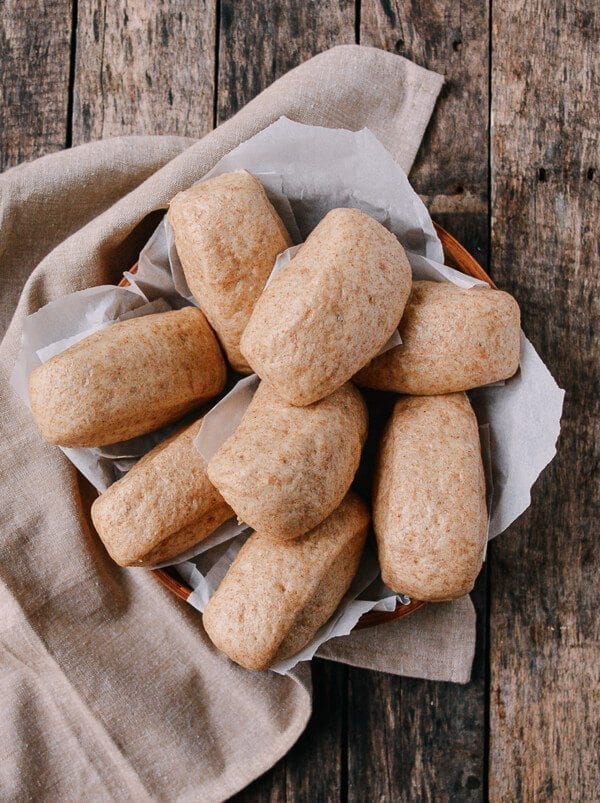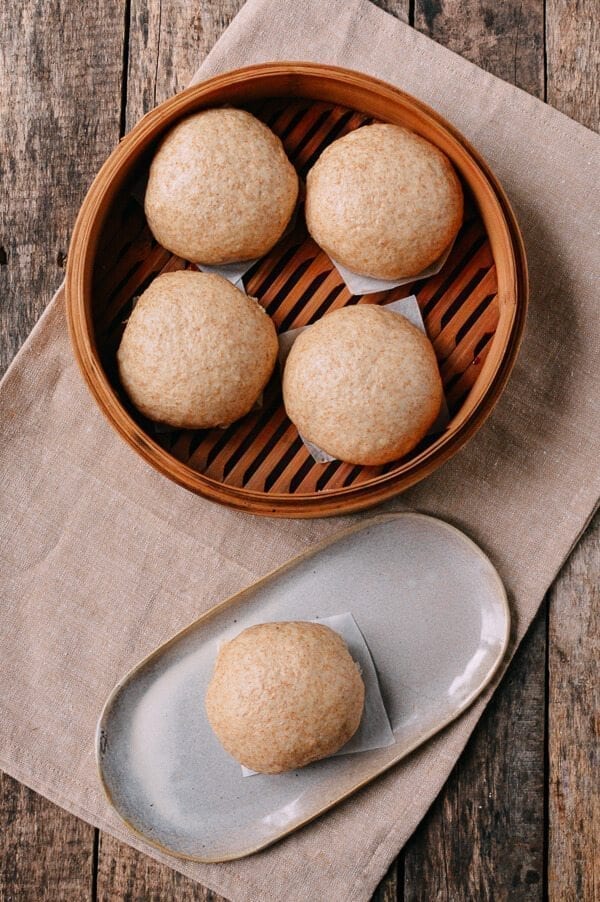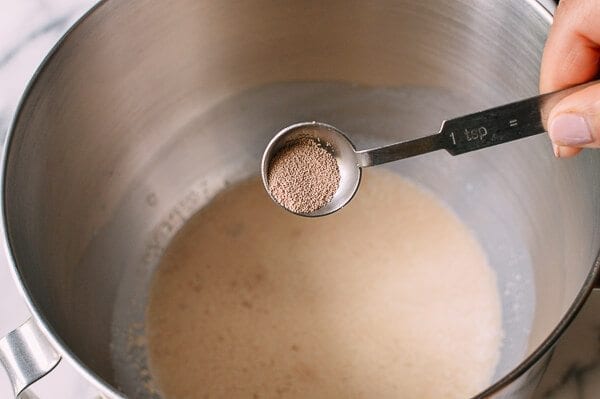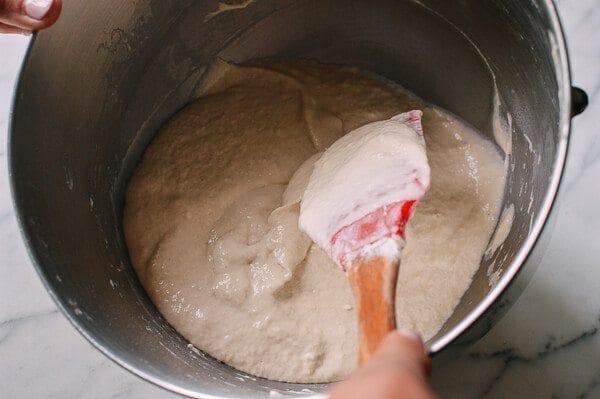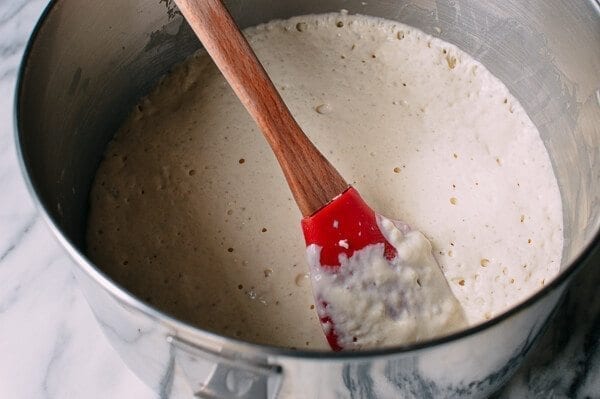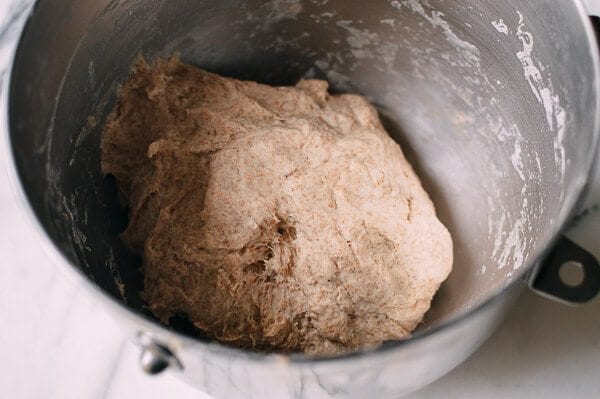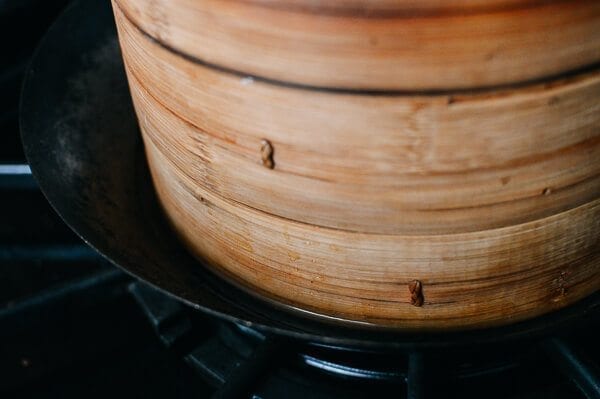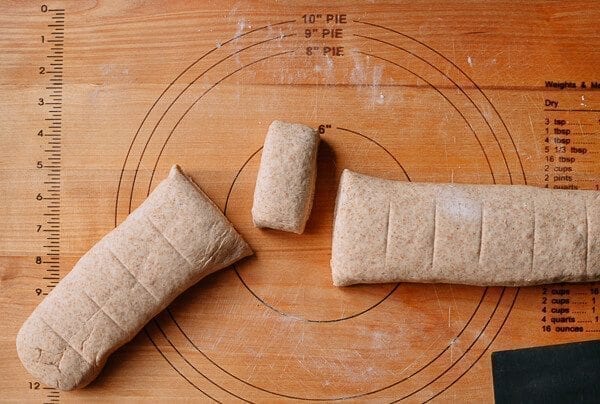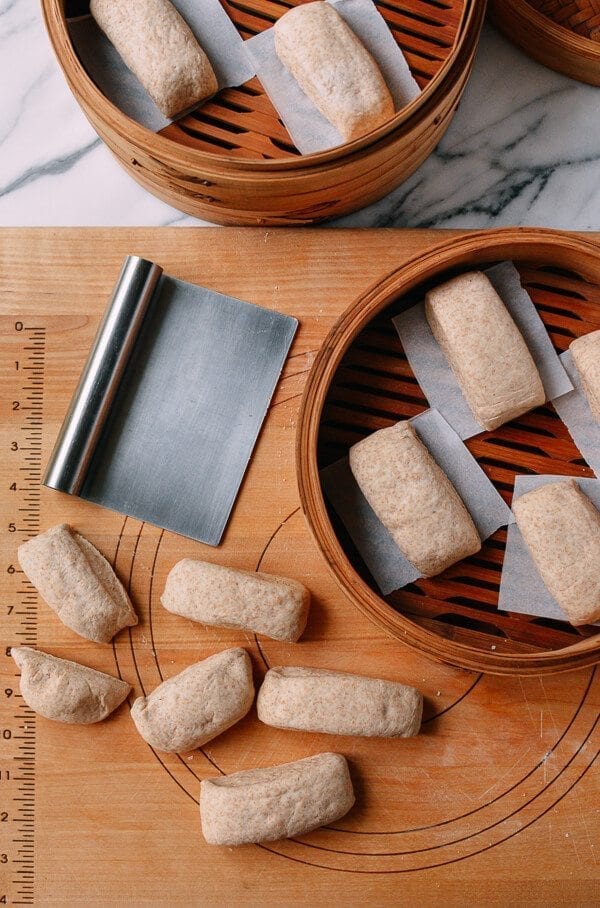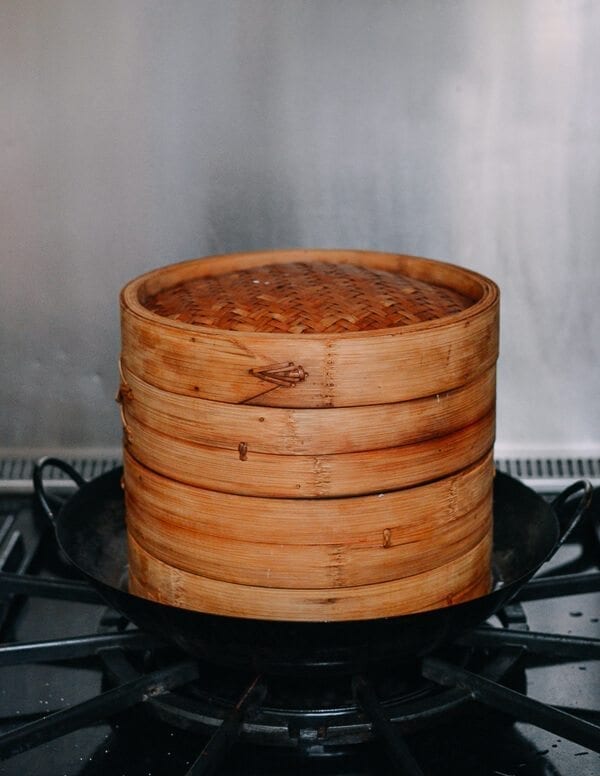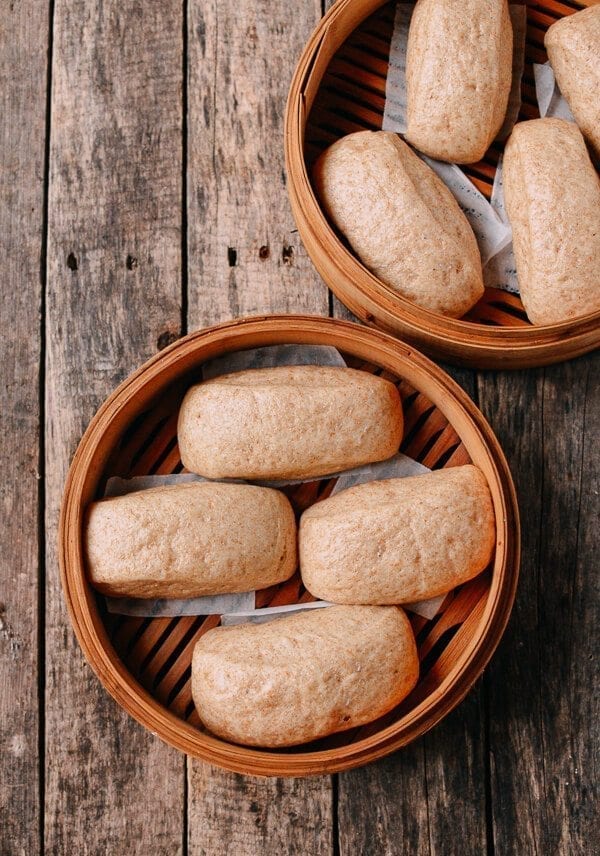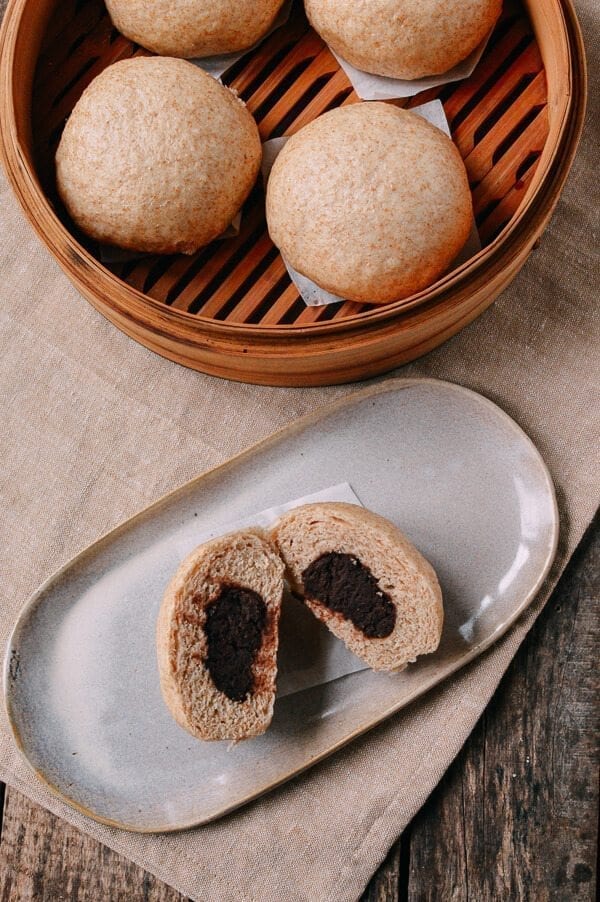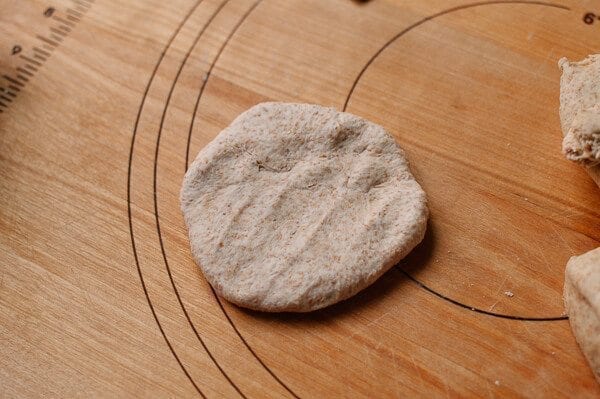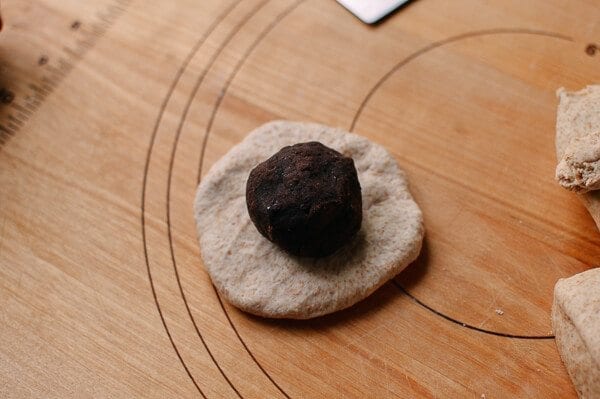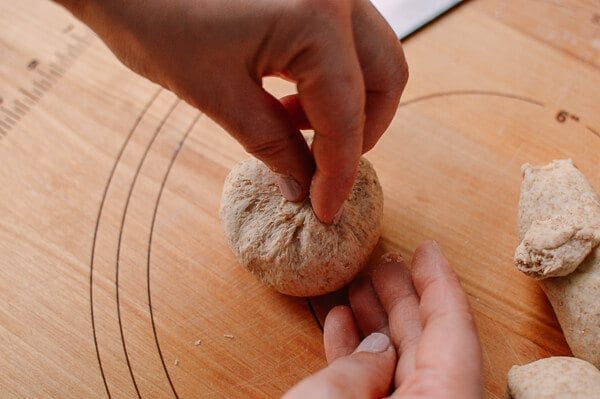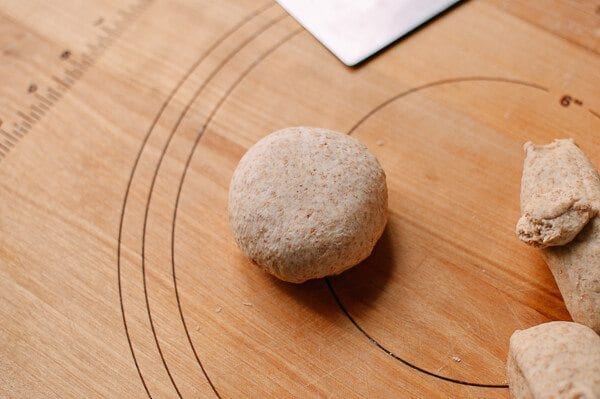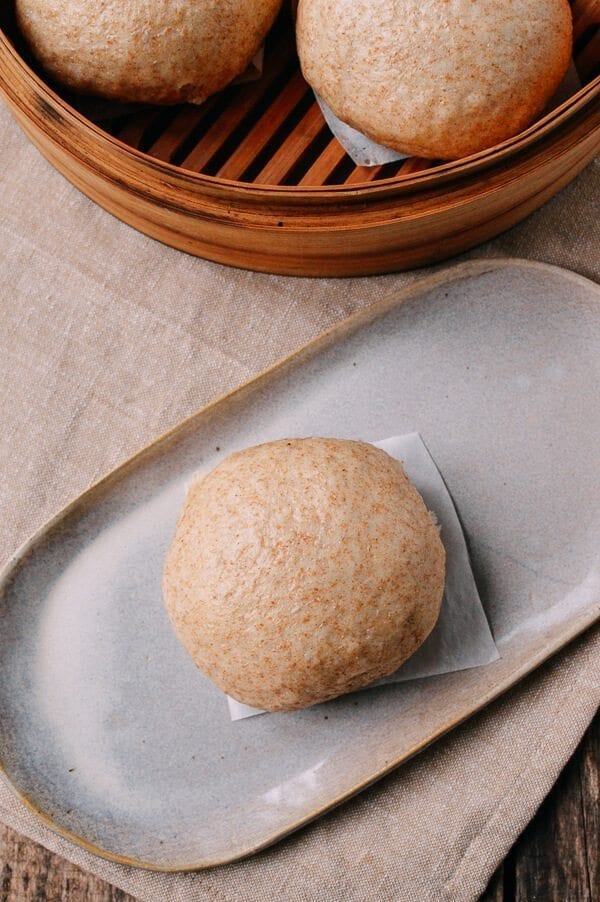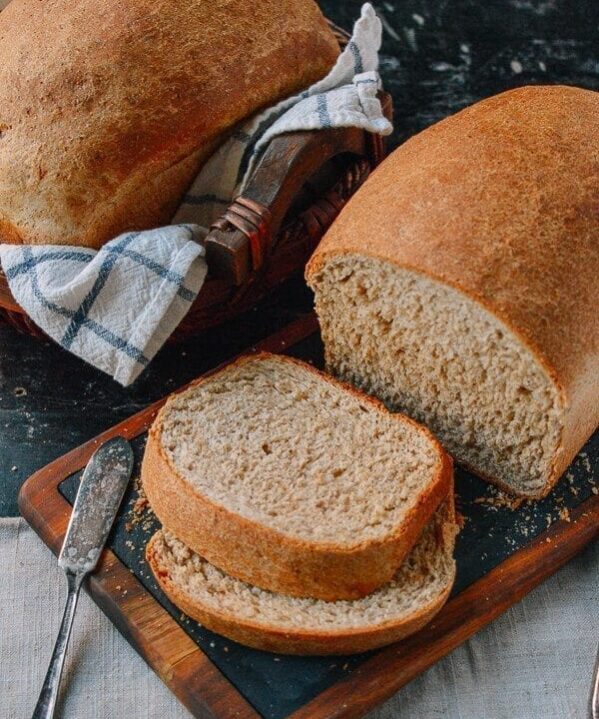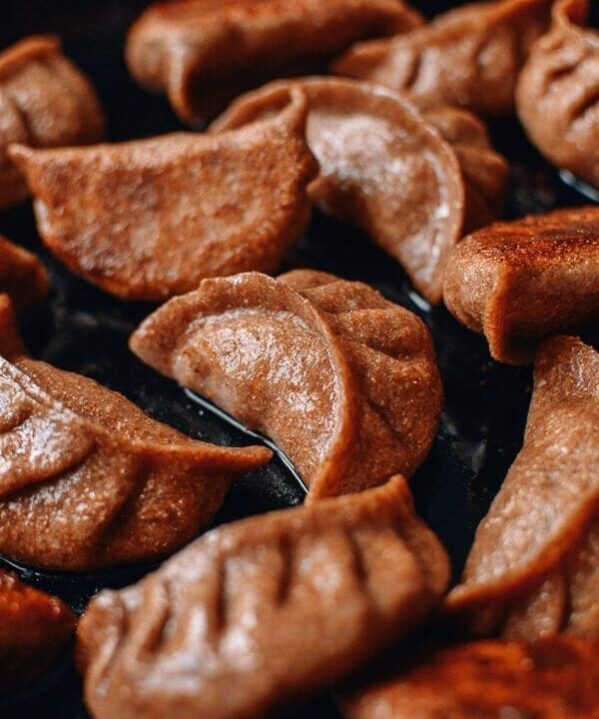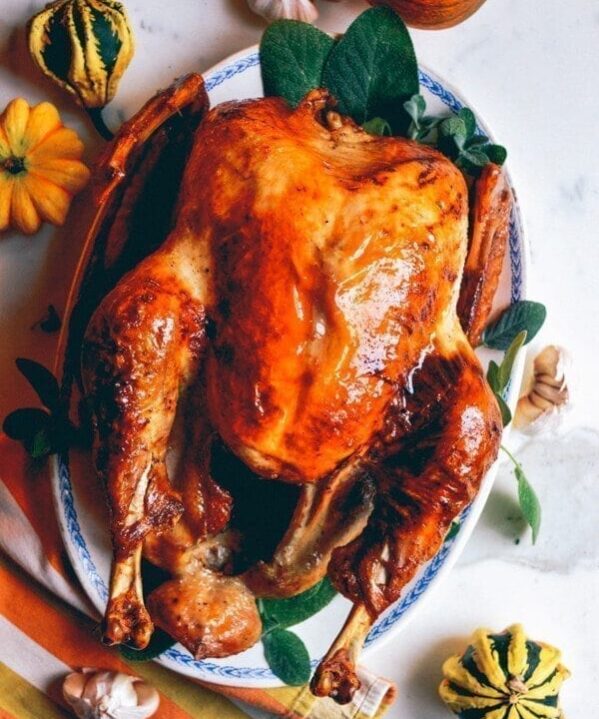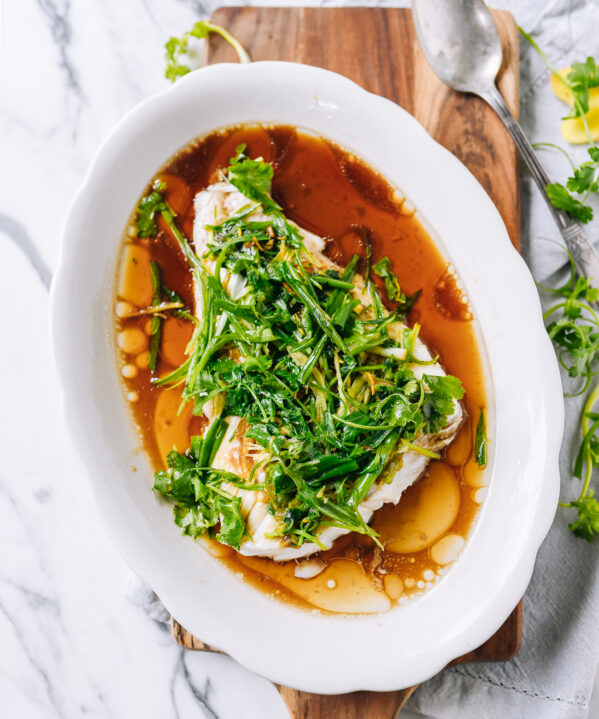“Fluffy” and “chewy” are how I like to describe these Whole Wheat Mantou. These are almost always the two words that come to mind when I come across really, really good mantou (Chinese steamed buns).
I had my fair share of whole wheat mantou when we lived in Beijing, as they are surprisingly common alongside the snowy white version. However, whole wheat mantou or quan mai mantou (全麦馒头) are typically pretty dense because of the whole wheat flour, so I’ve never had a really great, fluffy, chewy whole wheat mantou……until now!
Why This Southerner Enjoys Mantou!
I like mantou because they’re portable, easy to digest, and better when cold than rice! In the northern provinces of China, it’s a staple starch at every meal (it’s kind of equivalent to a dinner roll).
As a southerner who usually reaches for rice instead, I’ve learned to really appreciate the versatilities of mantou. With a large batch in the freezer, I am never more than 10 minutes away from a complete meal. Not to mention, it’s so nice to change things up a bit from time to time.
Most people recognize the word “baozi,” but not “mantou.” If you’re not native to China, it’s pretty likely that you use the English word “bun” to cover a wide range of steamed or baked dough, but the description is more specific in Chinese.
The word “mantou, 馒头” generally refers to steamed buns without filling. “Baozi, 包子” refers to steamed buns with filling like our Ginger Carrot Baozi pork buns. The baked buns with or without filling are what we call “mianbao, 面包.” You learn something new every day!
How to Eat Mantou
So how do you eat mantou? I usually just eat it with a meal just as I would using rice. But it can be used as a sandwich bun (i.e., gua bao); sliced, dipped in egg, and pan-fried; diced and stir-fried; ripped into chunks and used to round out a soup similar to a “chicken and dumplings” approach.
Chinese people also like to toast them over an open fire or deep fry them and dip them in condensed milk (this was a major guilty pleasure for us when we lived in China). In short, there are so many ways to enjoy a fluffy and chewy mantou.
If you got as hungry reading that as I did writing it, you’re in luck, because this whole wheat mantou recipe is really easy! Find out for yourself. :)
Whole Wheat Mantou Recipe Instructions
Heat the milk until warm to the touch (not hot). Then stir in the yeast and sugar until it dissolves.
Combine the milk mixture with 2 ¾ cups of all-purpose flour in a large mixing bowl. The mixture will be wet.
Cover with a damp cloth and let proof in a warm spot for 1-2 hours until the mixture doubles in size. Since it’s winter, I let the dough proof near a heat vent!
Now mix in the whole wheat flour, a quarter cup at a time, until the dough is smooth, soft, pliable, and not sticky. Cover the dough, and let it rest for 20 minutes.
Now, prepare your steamer with cold water. Make sure the water doesn’t touch the mantou during steaming.
Brush the steam rack with a bit of vegetable oil, or prepare 12 small (3” x 3”) squares of parchment paper to prevent the mantou from sticking to the steam rack.
Now knead the dough and divide it into 12 equal pieces using a kitchen scale. Form each piece into a ball. You can also roll the dough into a long tube and cut it into 12 equal pieces.
Space the mantou out on a steaming rack about 1-inch apart. You will need 2-3 racks, or you can steam them in a few separate batches. See our post on how to set up a steamer if you’re not familiar with steaming foods in Chinese cooking.
Let the mantou rest in the steamer for 30-45 minutes until the dough doubles in size before turning your stove on to high to start the steaming process. Steam for 15 minutes using high heat, then turn off the heat, and wait 5 minutes before opening the lid to check your mantou. The last step will ensure your mantou come out full and smooth! Otherwise, they will collapse and look lumpy.
You can enjoy these mantou immediately or store them in a plastic bag after they’ve cooled completely. They will last about a week in the refrigerator, or you can freeze them. To reheat, I usually steam them for about 8-10 minutes. Microwaving for 30-60 seconds also works!
You can also fill the mantou dough before steaming. Here’s an example with storebought red bean filling:
Simply flatten out the mantou dough into a circle…
Place the filling in the middle.
And close the dough around the filling, pinching it together with your fingers.
Flip the bun over so the smooth side is facing up.
And steam, using the same instructions for the plain mantou. These whole wheat mantou buns freeze really nicely after they are steamed and reheat like fresh ones in the steamer right out of the freezer! For more steamed buns, try our steamed Chinese sausage buns (lop cheung bao) with a fluffy white bun and our steamed cha siu bao pork bun that has a more cake-like texture just like you get at dim sum or in Chinatown!
The Perfect Whole Wheat Mantou Recipe
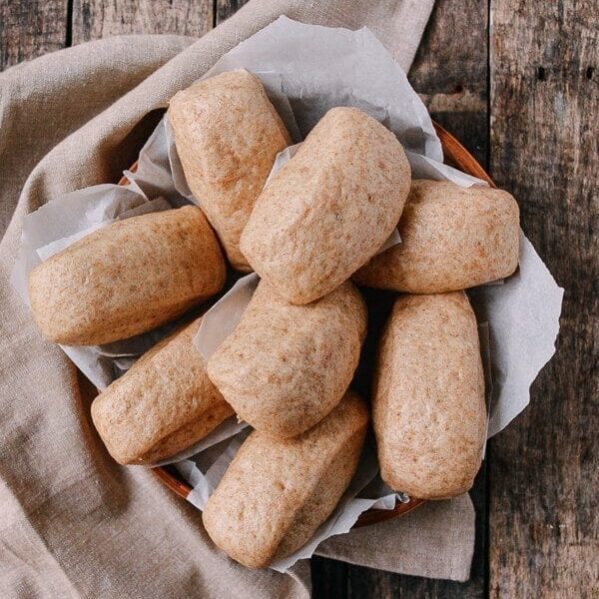
Ingredients
- 1 ⅔ cups warm milk (400 ml)
- 1 teaspoon active dry yeast (3 grams)
- 1 tablespoon sugar (12 grams)
- 2 ¾ cups all-purpose flour (400 grams)
- 1¼ to 1½ cups whole wheat flour (about 170-200 grams; how much you’ll need is dependent on the humidity in your kitchen)
Instructions
- Heat the milk until warm to the touch (not hot). Then stir in the yeast and sugar until it dissolves. Combine the milk mixture with 2 ¾ cups of all-purpose flour in a large mixing bowl. The mixture will be wet. Cover with a damp cloth and let proof in a warm spot for 1-2 hours until the mixture doubles in size. Since it’s winter, I let the dough proof near a heat vent!
- Now mix in the whole wheat flour, a quarter cup at a time, until the dough is smooth, soft, pliable, and not sticky. Cover the dough, and let it rest for 20 minutes.
- Now, prepare your steamer with cold water. Make sure the water doesn’t touch the mantou during steaming. Brush the steam rack with a bit of vegetable oil, or prepare 12 small (3” x 3”) squares of parchment paper to prevent the mantou from sticking to the steam rack.
- Now knead the dough and divide it into 12 equal pieces using a kitchen scale. Form each piece into a ball. You can also roll the dough into a long tube and cut it into 12 equal pieces. Space the mantou out on a steaming rack about 1-inch apart. You will need 2-3 racks, or you can steam them in a few separate batches.
- Let the mantou rest in the steamer for 30-45 minutes until the dough doubles in size before turning your stove on to high to start the steaming process. Steam for 15 minutes using high heat, then turn off the heat, and wait 5 minutes before opening the lid to check your mantou. The last step will ensure your mantou come out full and smooth! Otherwise, they will collapse and look lumpy.
- You can enjoy these mantou immediately or store them in a plastic bag after they’ve cooled completely. They will last about a week in the refrigerator, or you can freeze them. To reheat, I usually steam them for about 8-10 minutes. Microwaving for 30-60 seconds also works!
nutrition facts
